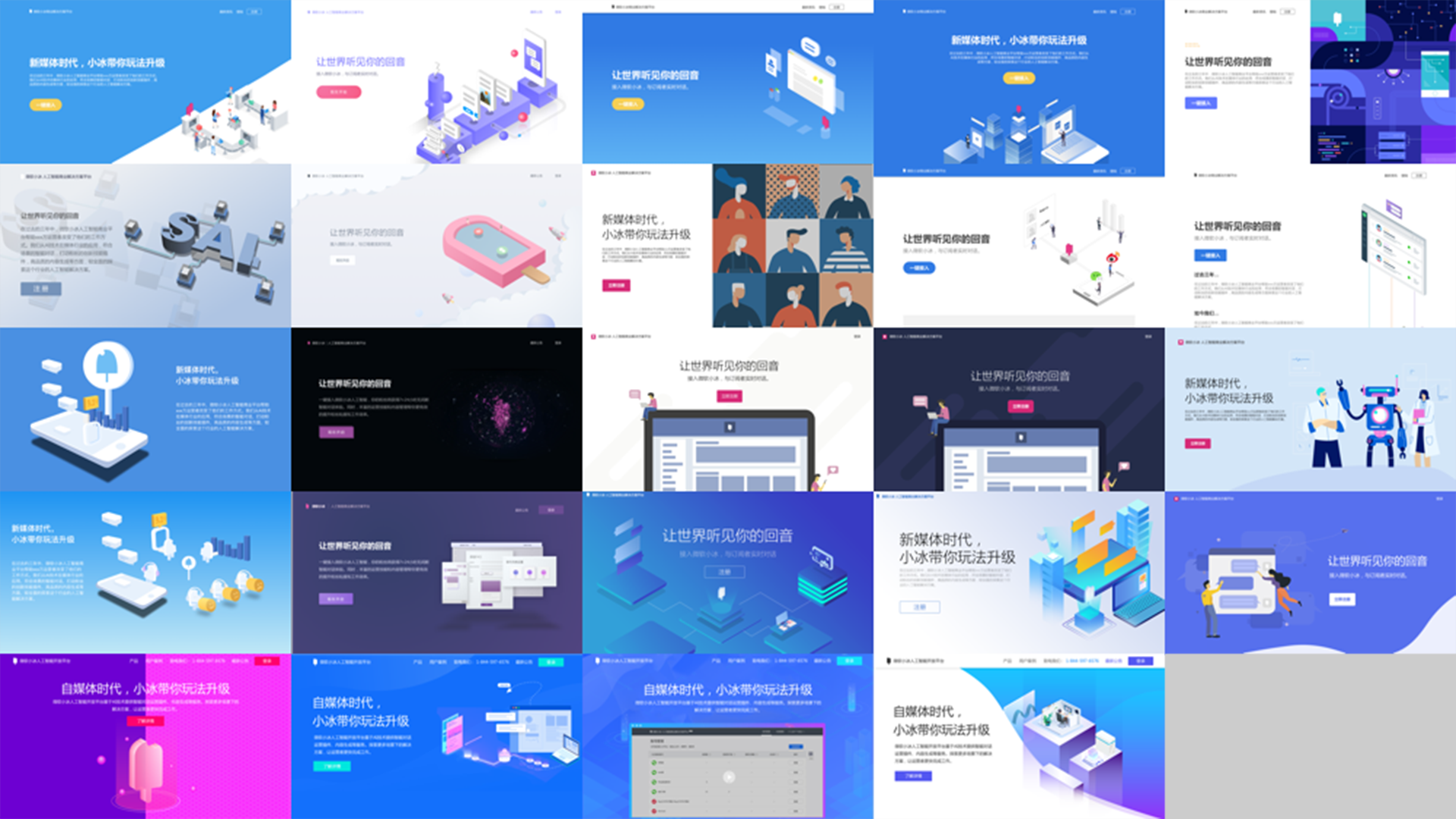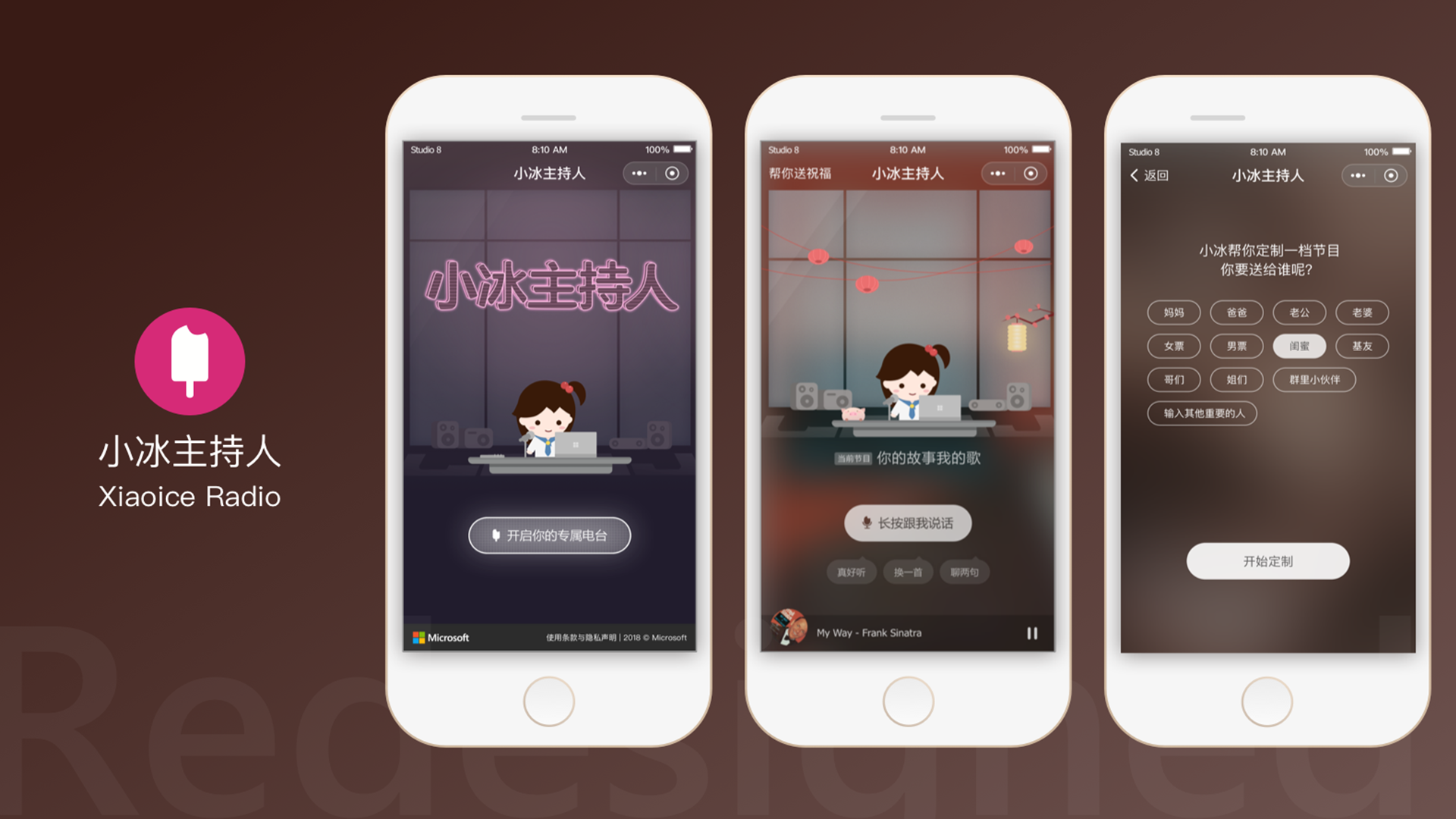-
 Shu Zhang
Microsoft China
Senior Designer
Shu Zhang
Microsoft China
Senior Designer
Touching by Empathizing: Humanize AI Products
Microsoft's Bing was officially launched by Microsoft (Asia) Internet Engineering Institute in May 2014, and integrates natural language processing, computer voice and computer vision technologies. At present, the single brand of Bing has reached 660 million online users, 450 million third-party smart devices and 900 million content viewers. The average number of words of dialogue with users (CPS) reached 23, and it has developed into the world's largest cross-domain One of artificial intelligence systems.
Bing focuses on the development of artificial intelligence in the dimension of fitting human emotional intelligence, emphasizing artificial intelligence emotional intelligence, rather than the basic value of task completion in human-computer interaction. Many users' feelings about Bing are: full of emotions, three perspectives, smart, and good at thinking. How to design a human-friendly experience for Bing has always been a question for the Studio 8 Bing design team to think and explore.
Based on the summary and induction of hundreds of Bing products' user experience design experience in the past two years, the workshop will share with the participants a set of methods for designing humanized experiences for artificial intelligence products. This set of methods includes the design process for the user experience of Bing products, and the design principles for establishing a humanized experience.
Through the study of specific design principles and design processes, as well as in-depth design case analysis, participants are introduced to a user experience design process for artificial intelligence products and design principles that give humanity to artificial intelligence products. During the design exercise, participants will put forward the creative conceptual design for the given specific design problems, using the methods introduced. Discuss these concepts in more depth and explore the challenges and opportunities for designing user experiences for artificial intelligence products.
The core methodology and content of the workshop (design process and principles that give AI product personality):
1. Understand what is the personality of artificial intelligence products
1.1 Personalities we know
1.2 Personality in artificial intelligence products
2. HAI design process and principles *
2.1 Application scenarios of HAI
2.2 Core Principles of HAI
3. Clarify the usage scenarios of AI products
3.1 Product value analysis
3.2 Create User Portrait
3.3 Competitive Product Analysis
4.Design methods for different scenarios
4.1 Scene Classification
4.2 Scene characteristics
5.Classic case analysis in different scenarios
5.1 Little Ice Radio
5.2 Bing Audiobook
5.3 Bing Avatar Framework
6.Discussion on design effectiveness measurement tools
6.1 Data-driven vs. data guidance
6.2 Quantitative vs. Qualitative
* Note: The HAI principle is Humanity in Artificial Intelligence. It is a design principle and method for exploring and giving humanity to artificial intelligence products.
1. Workshop content introduction: introduce the goals and structure of the workshop
2. Bing Product Development: Help participants understand Bing's progress in the AI field
3. Design Process / Principle Introduction: Share the HAI design process and principles for giving AI product personality
4. Case introduction: Interpret the design process and the application of principles through specific cases
5. Design exercise: Let the participants practice the design process and principles
6. Workshop design practice discussion: each group will display and discuss design solutions
7. Summary: Review of the application of processes and principles
1. Designers with 3-5 years of industry experience
2. Product manager
3. Practitioners interested in artificial intelligence products
1. Learn the methodology for giving personality to artificial intelligence products;
2. Master the design methods of artificial intelligence products in different scenarios;
3. Understand the opportunities and challenges of user experience design in the field of artificial intelligence technology;
















